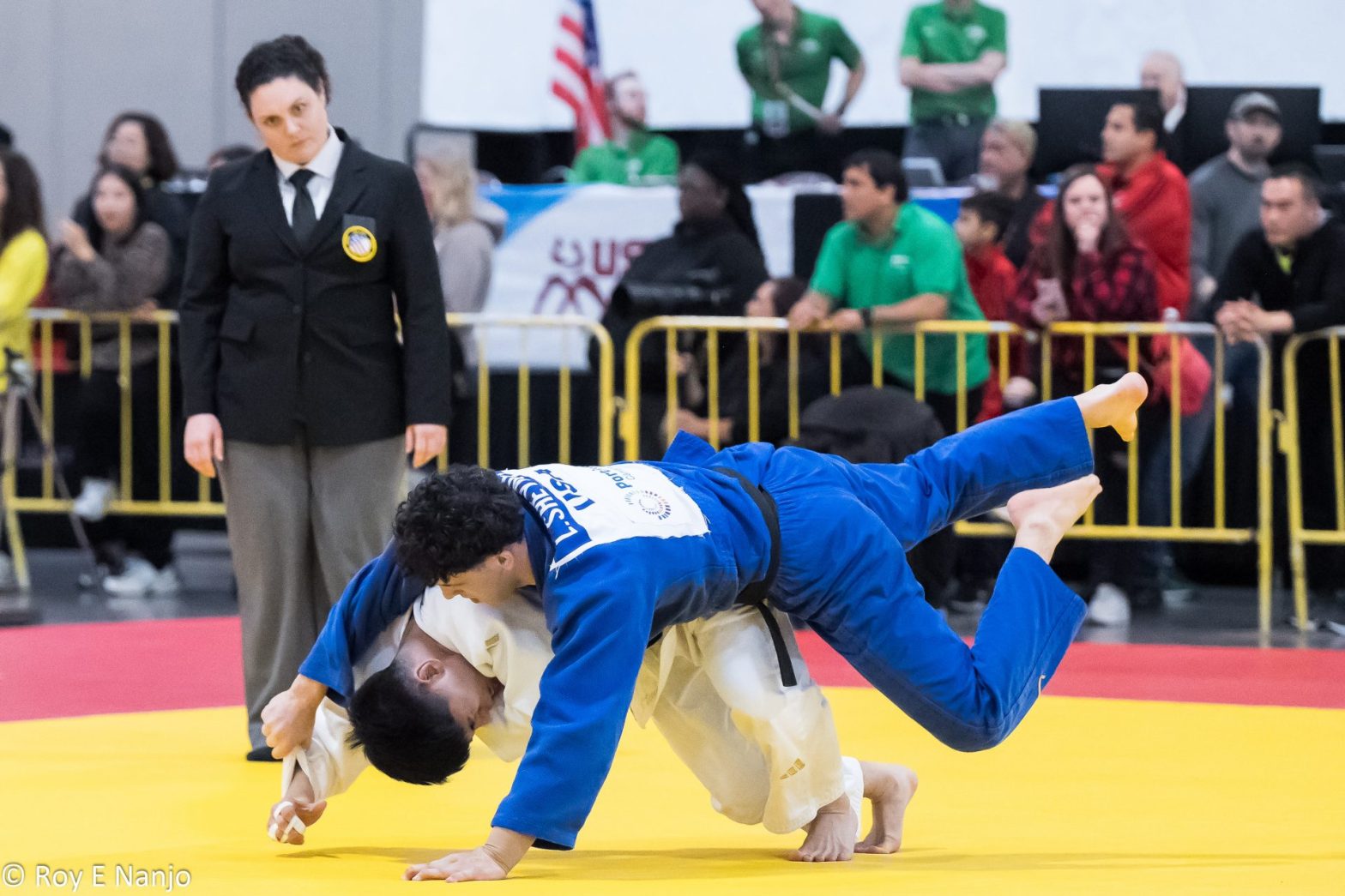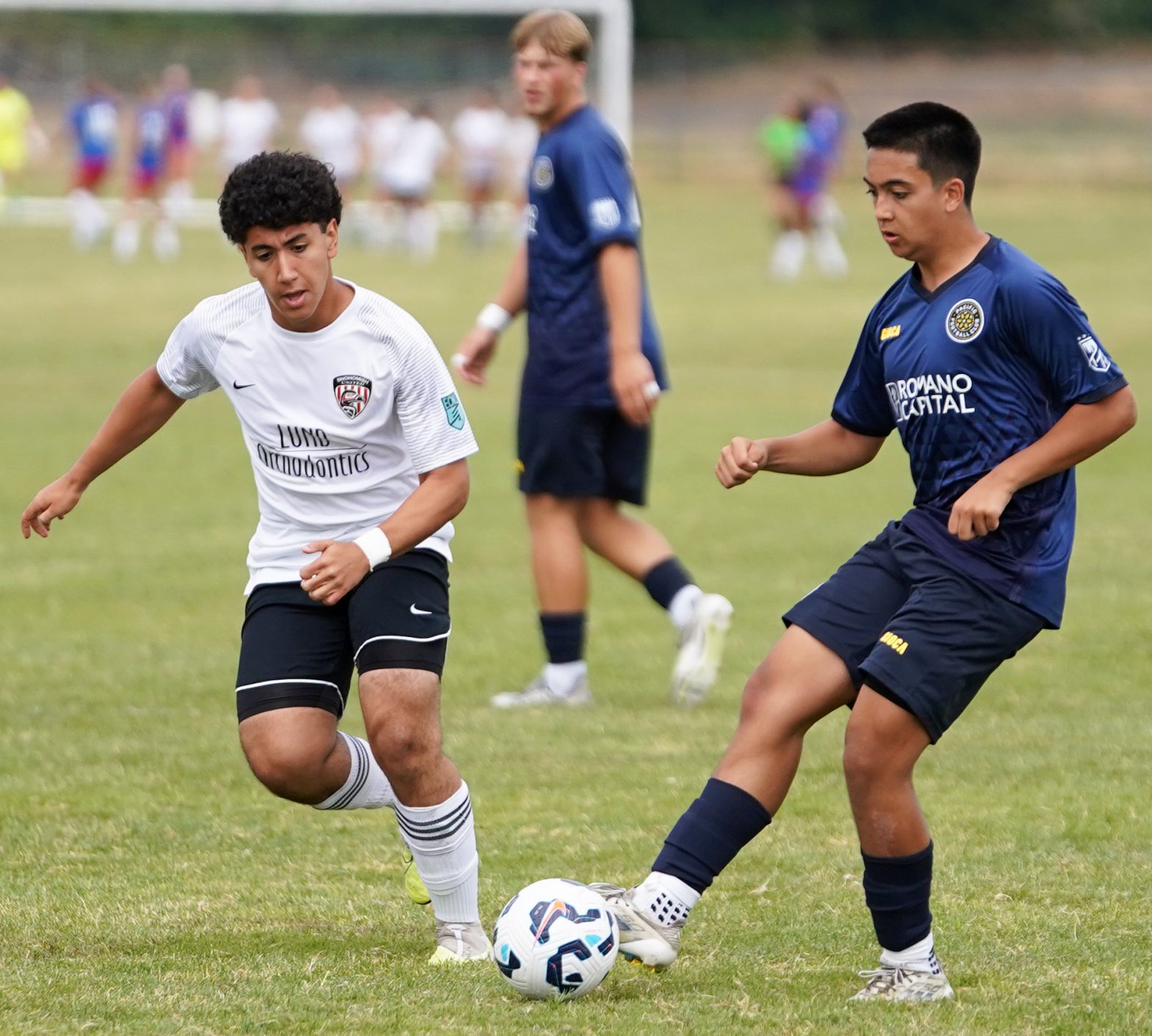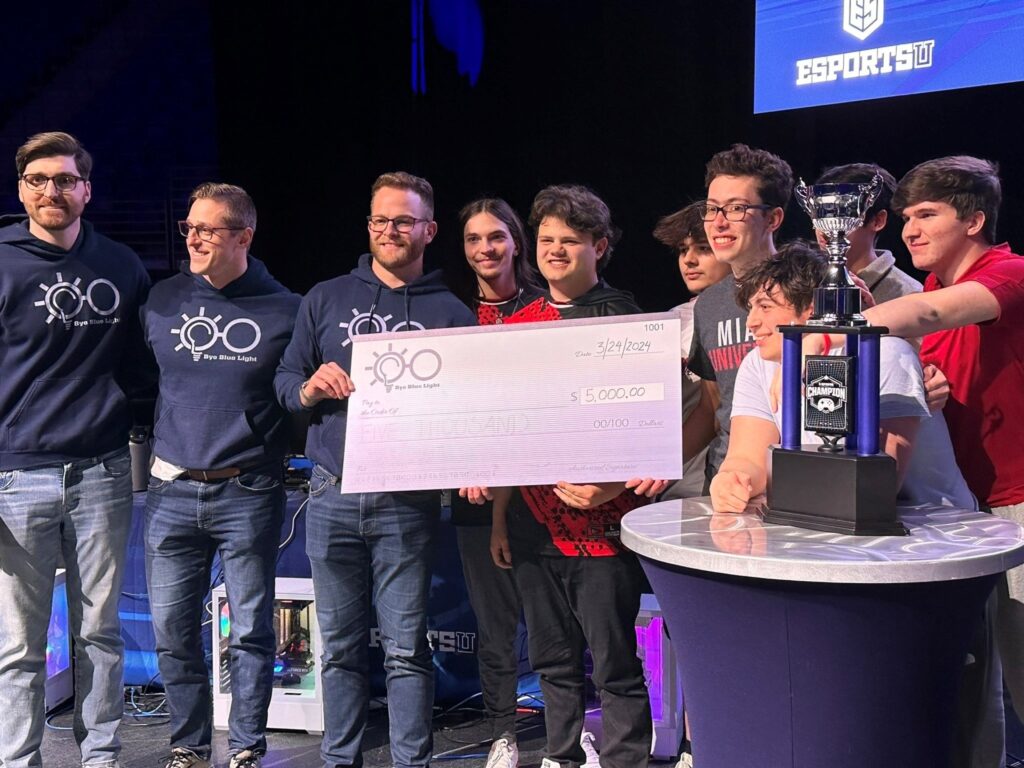
With an ancestry dating back to the original video games of the 1970s, team electronic game playing, known as e-sports, has taken the world by storm—and may even show up at the Olympic games in the future. Since the early 2000s, the number of players has grown exponentially, and game playing has been recognized as a varsity sport at colleges and universities nationwide.
Reasons for the growth are obvious, says Dr. Glenn Platt, professor of network technology and management and co-director of the e-sports team at Miami University (Ohio), in Oxford, Ohio, which fielded the first D1 Varsity e-sports team in 2016. “People aged 35 and younger watch more video games on a daily basis than they watch every other sport combined. Playing video games, watching games online, and following celebrities in the sport are all part of day-to-day life for this generation. E-sports are woven into the fabric of identity for this generation. So, for colleges and high schools, we are meeting students where they live, by having teams.”
In 2018, the National Federation of State High School Associations (NFHS), the governing body behind competition rules for most high school sports in the United States, recognized e-sports as a sport. According to the NFHS, “E-sports is the combination of the games that students love and play with the competitiveness, teamwork, and team structure found with other scholastic team-based sports. E-sports affords students the ability to gain valuable life lessons and social skills that students learn in a team sport atmosphere.”
The NFHS further notes that 45 percent of current e-sport athletes say that e-sports is their first experience in an after-school activity, which the organization calls a leading factor contributing to e-sports being the fastest growing sport in the United States. NFHS partners with PlayVS, the nation’s leading scholastic e-sports provider, which runs e-sports state and regional competitions at high schools across the U.S. and Canada.
Daniel Tillman, who teaches AP U.S. government & politics and U.S. history and is the e-sports coach at McGill-Toolen High School in Mobile, Alabama, says e-sports offer many students an opportunity they have never had before—a chance to compete in a team environment. “Many of the students have played games for years and been randomly partnered up with others, but they have generally never had to develop the skills to work together with the people next to them to achieve a goal. Prior to playing on an e-sports team, they didn’t have the communication skills that athletes in more traditional sports have built up because of the anonymous, faceless, and sometimes silent nature of online gaming.”
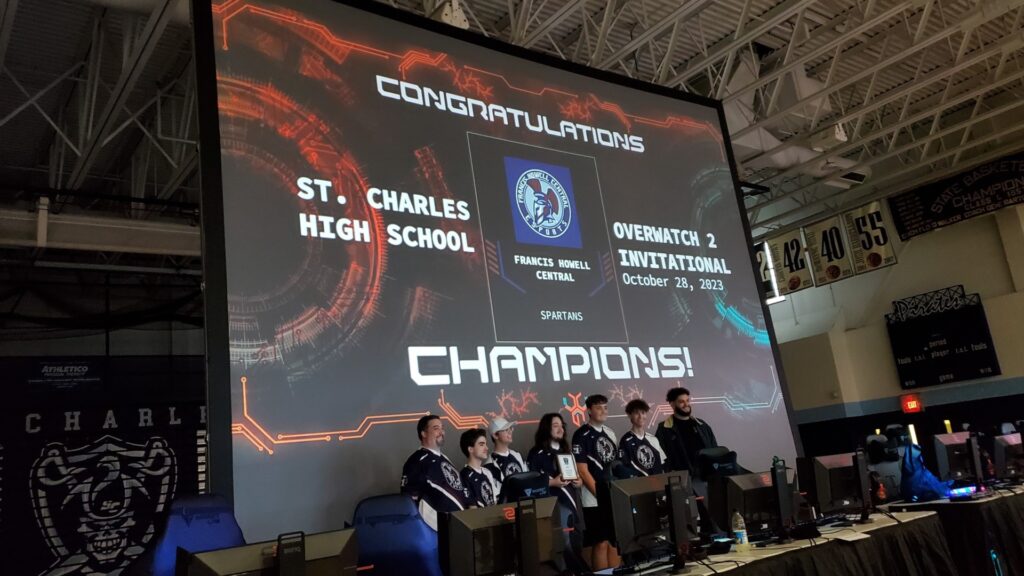
He says the skills acquired from playing on e-sports teams have helped his students earn college scholarships. “Some of my students came to me hardly ever speaking a word in class or on the team, and then gradually found their voice and turned into leaders for the team. When colleges come to recruit my students, that ability to communicate and the leadership ability are what they prioritize above skill in the game.”
Mark Dandridge, Jr., school counselor, scholarship coordinator, and e-sports coach at Landstown High School in Virginia Beach, Virginia, says e-sports introduce students to others with whom they would never cross paths. “It’s no secret that teenage gamers can sometimes have trouble socializing in person or making and maintaining friendships. Like other traditional sports, playing e-sports brings together a group of students with similar interests. Even though some of the games are individual competitions, students must be able to communicate with each other in a respectful and productive way to push the team forward. And we place a huge emphasis on being a TEAM. Each win is a team win, and each loss is a team loss, regardless of individual or one-on-one performances.”
Finding the right sport
CCG (Cultivating Champions Group), with members and staff from around the U.S. and Canada, was founded in 2023 by a group of friends who turned a long-time passion for gaming into an organization to foster excellence in the current scene and provide opportunity for youth interested in e-sports. Kelda Sturgis, design director for CCG, says young people are playing the games for the same reasons people play any sport: because they have found something they are good at. “Also, they enjoy the opportunity to be taken seriously as an aspiring professional gamer. Some of them already make money playing for a team or are seeking college scholarships.” Sturgis says her organization is “one or two tiers” below pro level but working toward professional play. They currently have teams in League of Legends, Valorant, and CounterStrike 2.
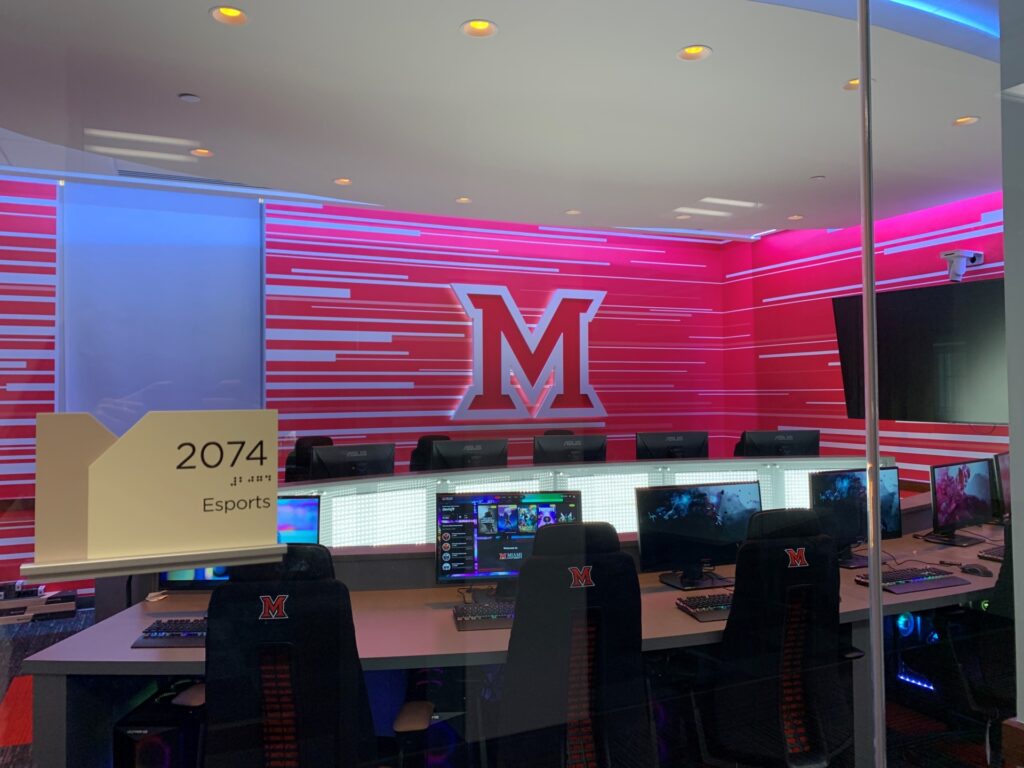
The STEM influence
Some experts draw a connection between STEM studies (science, technology, engineering, and math) and e-sports gaming, but not all of them.
We’re a STEM Academy school, so the two programs go hand in hand,” says Dandridge at Landstown. “The majority of our pool of players are high performing academically and heavily involved already in extracurricular activities. Our administrators give their full support to the team by allowing use of equipment and classrooms that are dedicated to the STEM Academy. In turn, our e-sports team is very high-performing and functioning at a high level, and that is used as an incentive for students to apply to our school. One of our coaches is the Game Design teacher at our school, so both his program and the e-sports team benefit from being fundamentally connected.”
Jessica Manrow, a graduate assistant and Varsity e-sports coach at Western Kentucky University in Bowling Green, Kentucky, says her school believes having an e-sports team could attract STE(A)M (science, technology, engineering, arts, and math) students, “but it also attracts students from all different educational backgrounds. Many of our students are involved in STE(A)M and are very successful at achieving their goals while at WKU. We also have students that are in other degree paths. For example, we have many students in the business disciplines. This is important to the program and to the institution because it allows students a chance to find a strong sense of community through relatability while fostering skill development, networking, and career readiness. Creating a positive competitive environment for students not only helps recruit students but keeps students returning to WKU.” WKU has had a Varsity e-sports team since 2016.
Dr. Platt says he’s not a “big fan” of the STEM/e-sports connection. “STEM has the same gender problems as e-sports: most students are males. If we say e-sports is all about STEM, we’re putting e-sports in the same position. But also, being good in e-sports or running the back office of e-sports (where most of the jobs are), doesn’t necessarily require STEM knowledge. Historically, maybe, it has leaned that way for players, but there’s no real reason for it. For students interested in working in e-sports, the skills they need are business, marketing, team building, and psychology. If a student hopes to get a job in e-sports management or marketing, there’s no more reason to think they need STEM skills than for similar jobs with any other sport.”
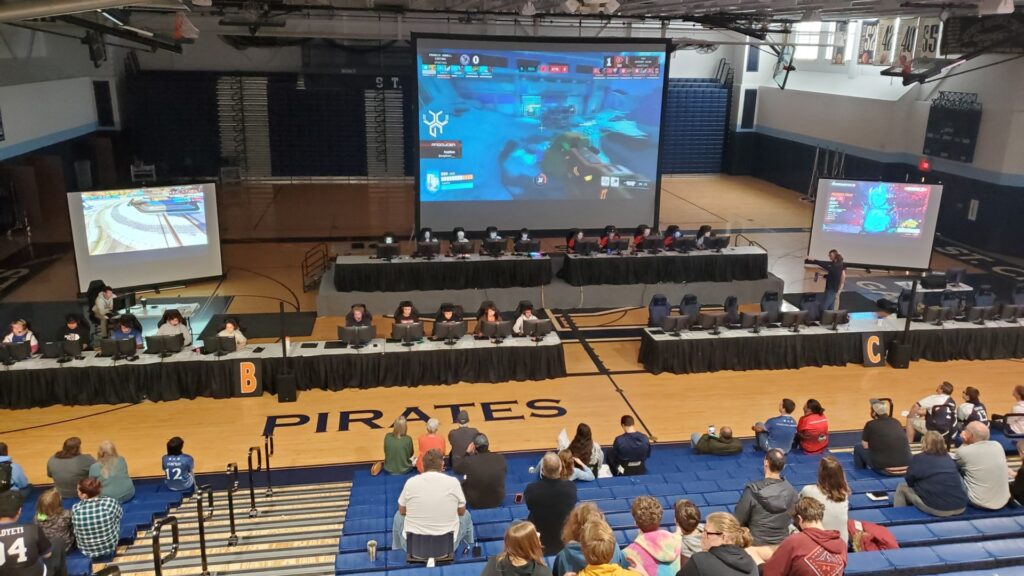
E-sports are and are not like other sports
“This is a sport, it’s definitely a sport,” says Platt. “To those who say it isn’t physical, well, you might say racing isn’t a sport because drivers just sit and turn a steering wheel. But there are differences from other sports. For example, most of us enjoy watching football, but not all of us have an interest in playing football. With video games, most of the people who watch also play. Fans are players, almost across the board.”
Platt notes while almost anyone can play video games, the top players are unique. “They are in a whole other universe, with training regiments that
are akin to other traditional sports.
There was a study of professional StarCraft players that shows them taking hundreds of actions [clicks] a minute. These players are very physically capable with highly developed skills. Fans who watch, online or in person, want to watch people play a game they understand but with skills far beyond their own ability. Same reason an amateur golfer watches the Masters.”
Tillman says his players at McGill-Toolin High School are like any other student athlete. “Many of my students have practiced for years with these games and have hundreds of hours of practice, like any student who plays football, baseball, or another traditional sport. And just like traditional student athletes, they must keep their grades up and pass their courses to maintain their eligibility. For some students, e-sports is the motivating factor to pass their courses.”
A significant difference between e-sports and traditional sports is game ownership, Platt explains. “Games are owned by the companies that developed them. They have individual rules and permissions required. There’s only one game of football. No one owns football. With e-sports, any game could be an e-sport game. There’s no governing body that says this game is it. It’s all based on popularity and that changes when new games come out. Someone good at one game, isn’t necessarily good at another. When I build a team, I base it on a particular game, and I build new teams when new games become popular with the students.”
Reaching fans and watching games
Currently, most high school or college e-sports tournaments are held in existing campus or community facilities. While there are large stadiums in the U.S. hosting e-sports competitions with live audiences, including E-sports Stadium in Arlington, Texas, and Bendix Arena at the Century Center, in South Bend, Indiana, more than 80 percent of e-sports are watched digitally on platforms such as Twitch and YouTube, according to a report from investment firm Goldman Sachs.
In e-sports terminology, an arena is a high-end computer lab where people compete, with or without a space for spectators. The arena at Century Center in South Bend features a 36 PC gaming center and a 600-seat theater. It was built with a partnership commitment from Bethel University. “Bethel has been a great partner,” says Brandy Charles, director of sales for Century Center. “When the gaming center was announced, it sparked their interest and thus their e-sports team was born. It was an opportunity to start something new that could align with their values.” According to an article from the South Bend Tribune, Bethel competes in the League of Legends, Overwatch, and other games at the varsity and club levels that aren’t overly violent or sexual. “We’re looking at what other Christian universities are doing, trying to focus on games that are more strategic,” said Christopher Hess, Bethel’s associate athletic director, quoted in the article.
Charles says the arena is still growing an audience, “and recently we’ve had a nice uptick in interest from teams outside our region.”
The future of e-sports
E-sports are growing from the ground up. All the coaches interviewed for this article say teams began because of student interest. Long before there were formal college or high school teams, there were clubs. “Varsity growth has been a grassroots growth,” says Dr. Platt. “Schools that are successful are so because students drove the administration to formalize the teams.”
Platt thinks general support of e-sports will grow in the same way. “It’s not a revenue-based sport, like football, it’s an audience-based sport. A college is in e-sports because that’s where their students are. Ultimately, I think this generation will grow to donate to their school’s e-sports programs and will build rivalries with other universities just like football or basketball rivalries. It’s just a matter of time.”
Coaches and others involved with the sport find it well worth their investment. Sturgis, with CCG, says her involvement with e-sports has been inspiring. “At the first tournament we organized, held at a high school in St. Louis, Missouri, we had eight teams from seven local high schools competing. For many, it was the first time they were able to get on a stage and show their friends and family their skill in something they’re passionate about. I’ll never forget one grandfather I talked with who was ecstatic that his grandson had this opportunity to play in front of everyone, and it was clear to me how much it meant to him and his grandson. Having the ability to create this kind of experience for these high school kids was one of the best things I’ve ever done!”






